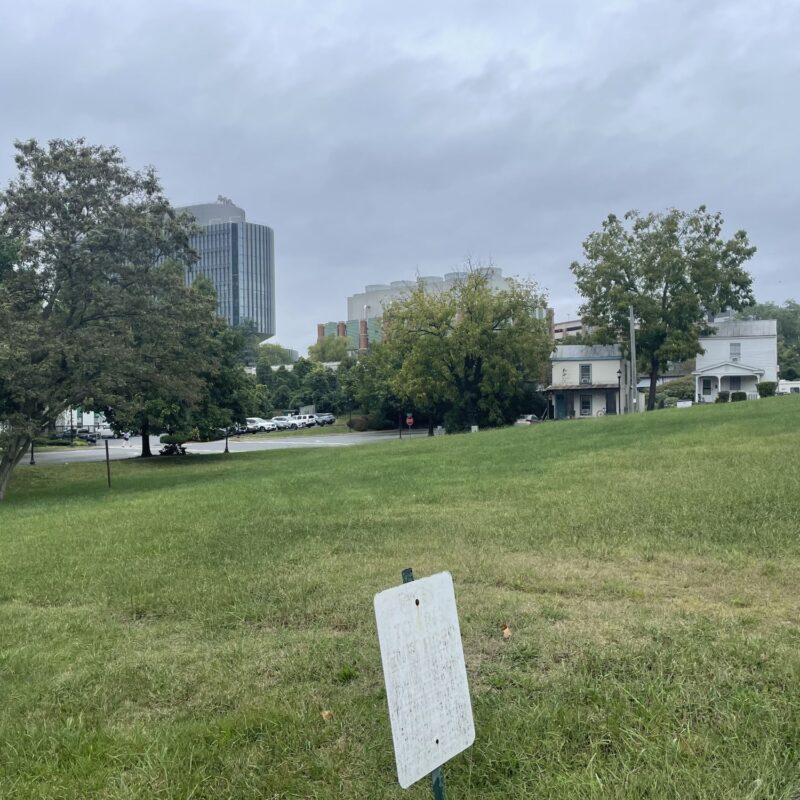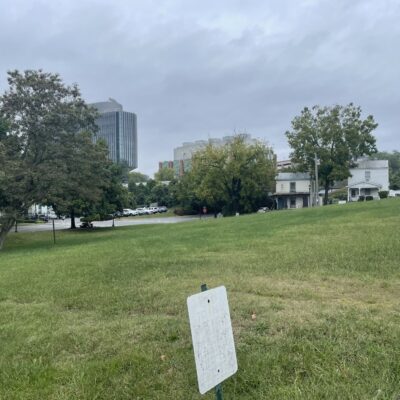Is a photograph a straightforward document of reality? Hardly anyone thinks so anymore. In the art photography realm, it’s been nearly a century since artists like Alfred Steiglitz and Paul Strand—now firmly in the canon—began playing with the medium’s relationship to representation and truth. Students of the medium are well-accustomed to thinking about how fluid, three-dimensional space gets transformed into a static, flat image, and how that object nonetheless has a material existence in which it can rip or decay.
|
Add ’em up: Louise Lawler’s “How Many Pictures” draws viewers into a visual loop at UVA Art Museum’s current abstract photography exhibit. |
Even if you got the joke long ago, however, a new set of punchlines can revive the discussion. The UVA Art Museum’s show presents contemporary photographers not overly familiar, so there’s a welcome freshness to the spectacle.
There’s even mystery, as when Louise Lawler’s “How Many Pictures” magically draws the surroundings into its sphere. It’s a shot of an art gallery’s shiny hardwood floor, reflecting the bold colors and forms of a Frank Stella piece hung on the wall above. Surfaces mingle and slide over each other: the horizontal floor, the vertical photograph, the reflection which exists—where, exactly? Even better, the presence (and reflection) of a mundane electrical outlet makes the photo evocative of the gallery as a place. Then you look down, and see a real outlet at your feet; back at the photo, and see yourself in the glass…
The curation here is equally clever, as when two photographs of trees are hung side-by-side, each probing a different aspect of the photo as a supposedly transparent document. In Jim Hodges’ “In this Place Where We Met,” it’s surfaces that are at stake. The large image shows a tree against the sky. Throughout the dark area of foliage, the actual print has had cartoonish leaf shapes cut out and folded back, so that the paper itself literally “leafs out” to form a handmade, 3-D object within which a mechanically reproduced, 2-D image is still visible.
The other tree picture, Rodney Graham’s “Welsh Oaks No. 1,” is simpler. It’s a rural landscape with an oak at a bend in the road, and it’s turned upside-down as though to remind us that the camera has no brain, that it just records light. The tree’s branches become roots plumbing the blank “soil” of the sky, and its outline, so familiar to our eyes, is defamiliarized so that the pattern of branching within it becomes newly beautiful, even mesmerizing.
So, in a different way, is an image from Vic Muniz’s “Pictures of Dust” series. Here, a pile of debris—asphalt shingles? broken tiles?—just escapes being recognizable, as does its location. There are slips of paper, tufts of grass or roots, a feather, wisps of straw; they are intensely material, rendered in a grainy tactility that invites close looking but refuses to reward it with greater understanding. From further back, the detritus becomes a winglike shape that sprawls over two black frames, suggesting a subject that resists the clarity of documentation. Still, as in many of these visual puzzles, there is real pleasure in the seeing.






